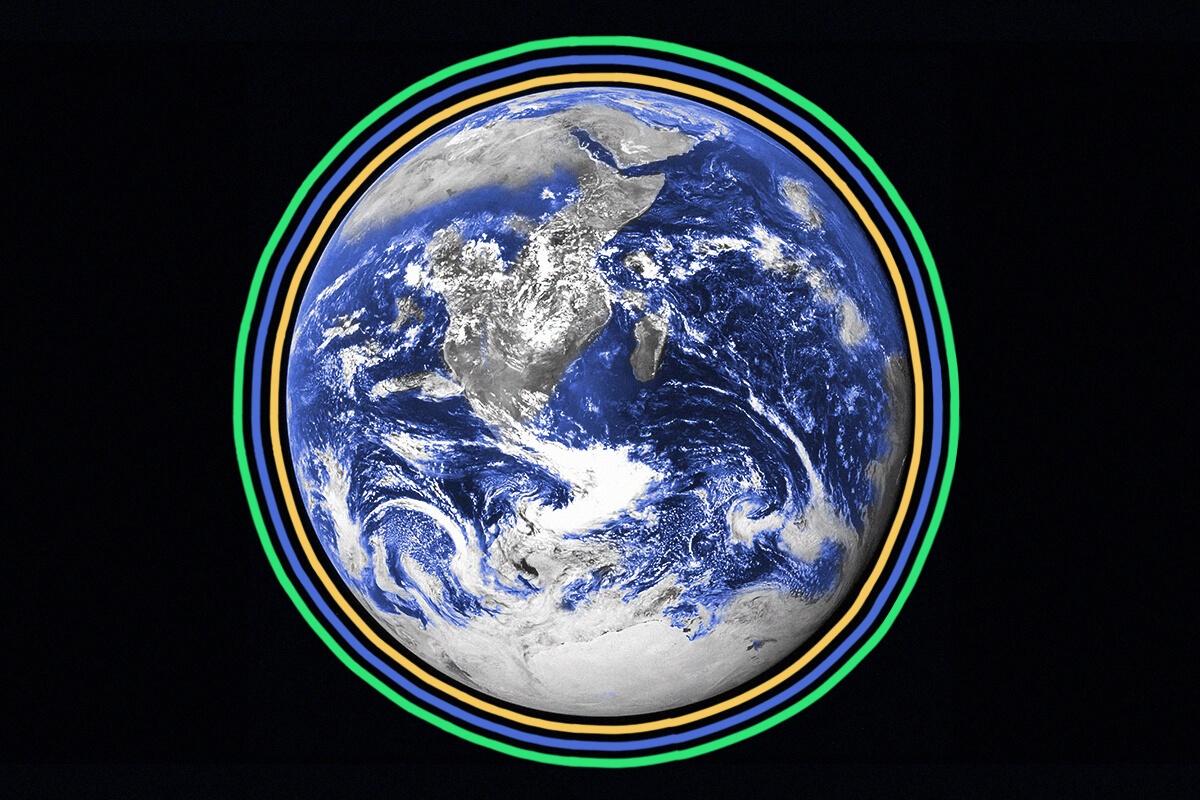
The Earth’s shape is constantly changing.
At a glance, the universe looks pretty well-organized, with perfectly spherical planets orbiting in concentric circles around a glowing orb. But things are a lot more complicated in reality. For example, while our Earth looks like a sphere when viewed from space, it’s actually an irregularly shaped ellipsoid (think a flattened sphere) because of the centrifugal force of its rotation. And its weirdness doesn’t stop there: The precise shape of the Earth is also changing all the time.
Many things affect the shape of the Earth. The drifting of tectonic plates form entirely new landmasses, and the Earth’s crust is still rebounding from the last Ice Age 16,000 years ago. While these minute adjustments go mostly unseen, other shape-altering events — such as earthquakes, volcanic eruptions, and asteroid strikes (RIP to our Cretaceous friends) — are hard to miss. But the Earth also changes shape by the hour, and humans can watch it happen … sort of. Every day (roughly), the Earth experiences two periods of high and low tide, where the gravitational effects of the moon and sun affect the movement of our oceans, and as a result, the shape of the planet, if only temporarily. So even if the Earth’s shape isn’t exactly perfect, it's certainly dynamic.
All planets travel in an ellipse around the sun, and the amount this elliptical journey departs from a perfect circle (represented by the value “0”) is known as an orbit’s “eccentricity.” This elliptical orbit means the Earth is closer to and farther from the sun at certain times of the year. Perhaps counterintuitively, the Earth’s closest approach to the sun, also known as its perihelion, occurs in early January, and its furthest distance (aphelion) happens in early July. Over the course of roughly 100,000 years, due to gravitational forces, the Earth’s orbit will fluctuate between almost 0 and 0.07 (which is still a nearly imperceptible ellipse). But these small numbers are much bigger when multiplied by the size of the solar system. Currently, the Earth at only about 0.017 eccentricity is enough to make the planet 3.1 million miles closer to the sun at perihelion compared to aphelion. Still, that difference isn’t enough to affect the seasons on Earth — those are caused by the planet’s axial tilt, and not the relatively small changes in our planet’s distance from the giant ball of gas at the center of our solar system.

